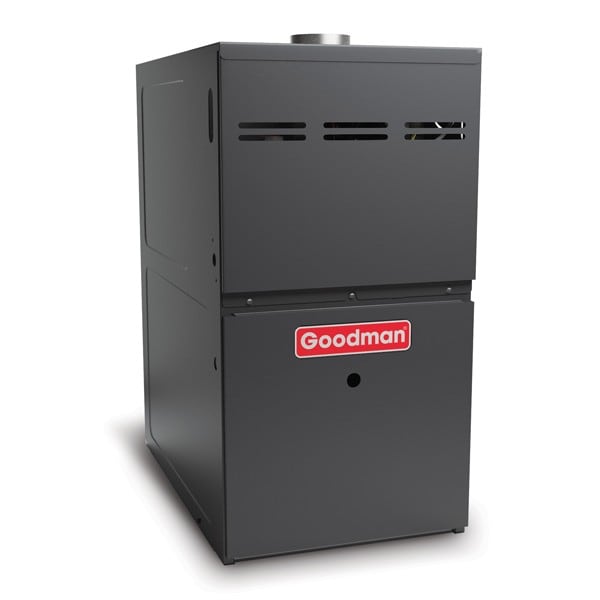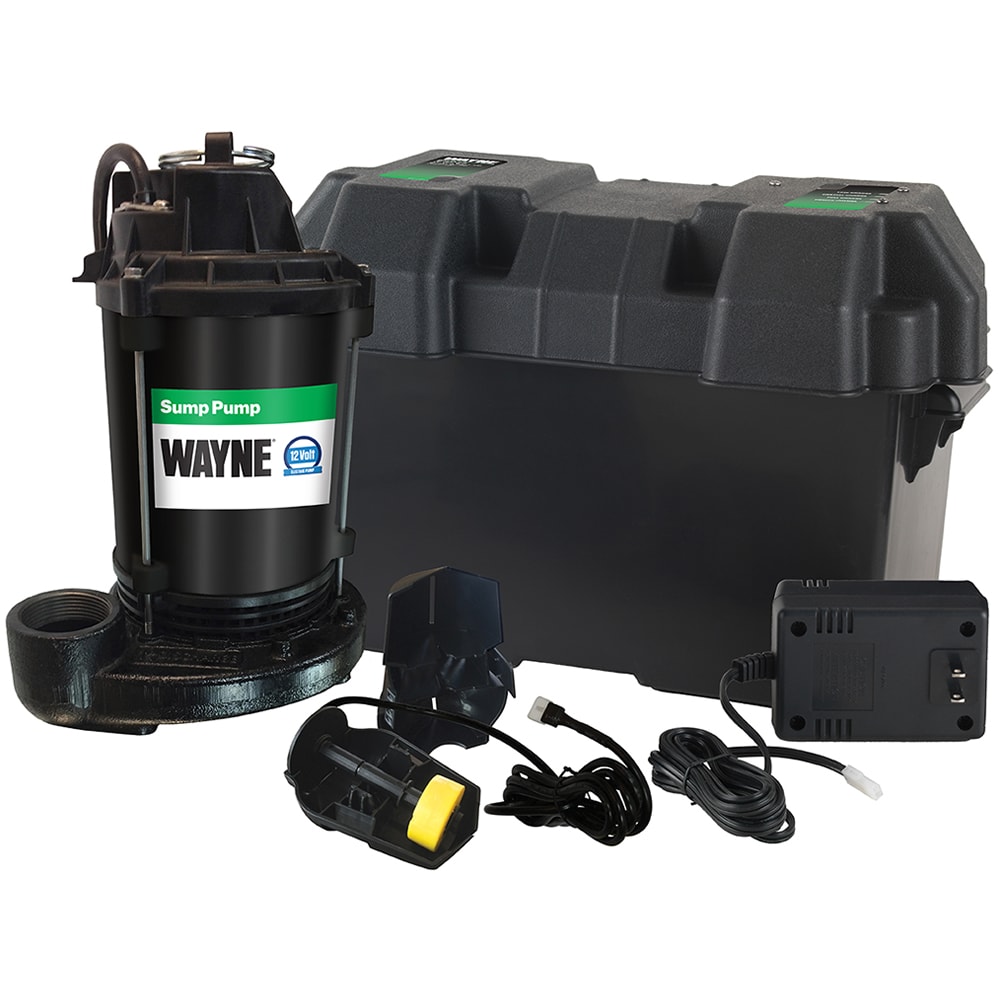
Winter Storm Prep Guide
Weather isn't planned; winter storms can strike at any time, and when they do strike, they come in full-force. Having an action plan to prepare for blizzards and power outages in the winter gives you added peace of mind for situations where power is out, snow surrounds your home, and heat is being lost quickly.
And, while meteorologists do their best to predict winter weather patterns, most people only think about preparing for a snowstorm or freezing conditions after it's fallen on their doorstep; we want to change that.
Bundle up and learn how to protect your family and your home from winter storms.
 
How to Prepare for a Winter Storm
No one wants their family to be endangered, cold, or hungry. Communicating a winter storm emergency plan with your family can also reduce fear or panic in children.
Prepare yourself and your family by making sure you have the following ready long before the start of the winter season:
- Know the risks of winter storms in your area using local and national resources
- Have an emergency plan and make sure the entire family knows what to do
- Have Emergency Food and Supplies ready before the storm, including hand-crank radios and lights or extra batteries. It's recommended to stock at least 3 days of nonperishable food and water for your whole family, as well as pets.
- Prepare your home for power-loss in winter weather
- Tune-up your snow-removal equipment
- Tune in to weather advisories and updates
- Keep animals inside and have emergency food and water on hand
- Stock up on gasoline or firewood before the storm hits
- Be a good neighbor: communicate with your neighbors to form a plan before a storm, and update each other during it. Help the elderly or others needing special assistance as long as it's safe to do so.
 

 
How to Prepare Your Home for Winter Weather
There's an abundance of things you can do to better prepare your home for extreme winter weather and blizzard conditions during the coldest months of the year. Use our pre-season checklist below to get a jump start on winter storm preparation.
 
1. Check Your Furnace or Alternative Heating System
 Make sure your furnace is working properly and that maintenance has been properly kept up. Even without power outages, a blown furnace can be an emergency in extreme temperatures. Don't forget to change the furnace filter while you're checking.
Make sure your furnace is working properly and that maintenance has been properly kept up. Even without power outages, a blown furnace can be an emergency in extreme temperatures. Don't forget to change the furnace filter while you're checking.
If you use alternative heating methods (or even if you don't normally), make sure to have extra firewood for a fireplace, fire starters, or heating fuel available in case of emergency. Check the fireplace and chimney to make sure it's clear of debris and that smoke can easily exit.
Last tip: keep your furnace set to the same temperature day and night to keep the house warmer with less effort.
 
2. Prevent Freezing Pipes
Check your pipes in the basement or elsewhere, and invest in pipe insulation to prevent frozen pipes. Periodically running faucets to keep water flowing (even small drips) is also recommended during extremely cold weather or power outages.
 
3. Check or Add to Insulation
There's no such thing as too much insulation. Check your attic, basement, and all crawlspaces to keep base temperatures higher in the home. This can also help prevent freezing pipes.
 
4. Weather-Sealing Windows and Doors
Simple yet effective, make sure your doors and windows are properly sealed to prevent heat loss, cold drafts, and other insulation issues. Weatherstripping, tape, and window wraps are available at most hardware stores. Make sure that exterior-facing walls and doors are also checked for leaks.
 
5. Prepare for Power Loss
 Have a generator ready in case of power loss (portable emergency or standby generators). In the winter, lost heat can be deadly, and power outages are common in heavy snowstorms.
Have a generator ready in case of power loss (portable emergency or standby generators). In the winter, lost heat can be deadly, and power outages are common in heavy snowstorms.
During emergencies, don't plan on trying to run your entire house with one generator-just focus on the essentials like the furnace, refrigerator, stove, and power to keep communication devices charged.
Don't forget to size your generator for surge (starting) wattages, and not the running watts. Most importantly, never, ever, run a gas-powered generator indoors or even in your garage. It must be run outside in the open air to prevent deadly carbon monoxide poisoning.
 
6. Tune-Up Your Snow Removal Tools
 Make sure to tune up your snowblower before the winter season, as well as having gas cans, extra oil, and fuel-stabilizer on hand to store and mix gasoline and oil when the time comes.
Make sure to tune up your snowblower before the winter season, as well as having gas cans, extra oil, and fuel-stabilizer on hand to store and mix gasoline and oil when the time comes.
Also, make sure to have a few extra spark plugs and shear pins on-hand for two-stage snowblowers, because most stores close down in severe winter weather. Remember, gas-powered snowblowers are recommended because they can be used without electricity during power outages.
If you use a tractor to remove snow with a plow attachment, make sure you've tuned up your lawn tractor and have tire-chains at the ready. If you plan on using a shovel or a salt spreader, make sure they aren't damaged and that you have salt to put in your spreader once the driveway is cleared.
 
7. Check Your Sump Pump
 Make sure your sump pump is operating correctly, and have a battery-backup sump pump installed in case power fails and melting snow gets into your basement. Water alarms should also be checked to ensure they are working properly, too.
Make sure your sump pump is operating correctly, and have a battery-backup sump pump installed in case power fails and melting snow gets into your basement. Water alarms should also be checked to ensure they are working properly, too.
Remember that once the storm passes and snow begins to melt, homes with a basement are especially at risk for flooding due to snow-melt. Consider getting flooding insurance as added security.
 
How to Clear Snow During a Blizzard
If you need to go outside during extreme winter weather, it is imperative that you protect yourself from the harsh conditions and limit the time you spend outside. Warm, layered clothing is a must, including hats, gloves, boots, and masks or scarves to cover your mouth to protect your lungs and face from cold air and frostbite. Know the signs and symptoms of hypothermia and do your best to remain dry.
When using a snowblower or shovel to remove snow, walk carefully and don't overexert yourself. Snowblowers were made to do the hard work for you. Snowblow often enough so snow doesn't pile higher than 6 inches on your sidewalk or driveway to prevent being snowed-in. Learn how to operate a snowblower safely and never ignore your body signals; rest as needed and take breaks to warm up.
 
How to Winterize Your Car for Winter Storms
- Have an emergency supply kit (jumper cables, ice-melt, flashlight, warm clothes, blankets, water, granola bars, shovel, snow scrapers, etc.)
- Get an oil change before the cold weather sets in. Also, ask for a pre-season winter inspection
- Make sure your tires are all-season or winter tires and have adequate traction
- During extreme winter storms, stay off the roads except for emergencies
- Keep your gas tank as full as it can be to prevent freezing fuel lines
Driving In Blizzard Conditions
 Although it is never recommended, if you must drive in blizzard conditions, make sure to have enough emergency supplies for everyone in the vehicle and drive cautiously at all times. Drive only on main roads and let others know where you are traveling and when you expect to return. Bring food, water, and warm clothing in addition to your car's winter emergency kit.
Although it is never recommended, if you must drive in blizzard conditions, make sure to have enough emergency supplies for everyone in the vehicle and drive cautiously at all times. Drive only on main roads and let others know where you are traveling and when you expect to return. Bring food, water, and warm clothing in addition to your car's winter emergency kit.
If you lose control of the car or become stranded, remain inside the vehicle and wait or call for help. Turn on hazard lights, crack a window, and keep the engine running as long as you can. If you are low on fuel, run the engine for 10 minutes per hour to retain heat and keep the engine warmed.
Make sure to continue moving your body to keep blood circulating to your hands and feet. Huddle together for warmth if necessary and don't forget to stay hydrated by drinking water-people often forget that you can easily become dehydrated in winter, too.
 
Tune In to Local and National Weather Resources
Whether it be cable TV, the internet, smartphone apps, or by subscribing to local alerts and email lists, make sure you stay well-informed of weather patterns during the winter, checking in for the latest information and updates.
Read up and identify the nearest storm shelters in case you can no longer remain at home without power or heat. If you didn't know, you can text FEMA (Federal Emergency Management Agency) and they will send you the address of your nearest emergency shelter based on your zip code. Simply text SHELTER and your zip code to 43352. 
 
How to Recover After a Blizzard
Blizzards and winter storms can be devastating in many ways. After the storm is over, take stock of your family's wellbeing and your resources. Replace what you used from your emergency kits quickly and offer to help neighbors that may be having a difficult time cleaning up or getting back on track.
Once power has returned, replace the gasoline you may have used in your snowblower, generator, or vehicle. Inspect the same things you checked before the storm to make sure they are still working properly (sump pump, furnace, etc.). Then, ensure that your home's exterior was not damaged during the blizzard.
 
![]() NEXT: Why You Need a Track-Drive Snowblower
NEXT: Why You Need a Track-Drive Snowblower

